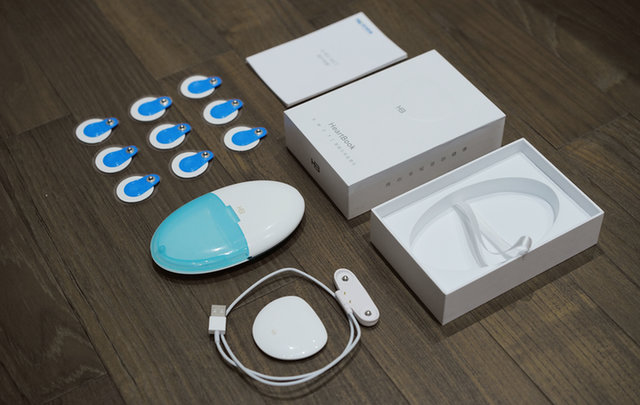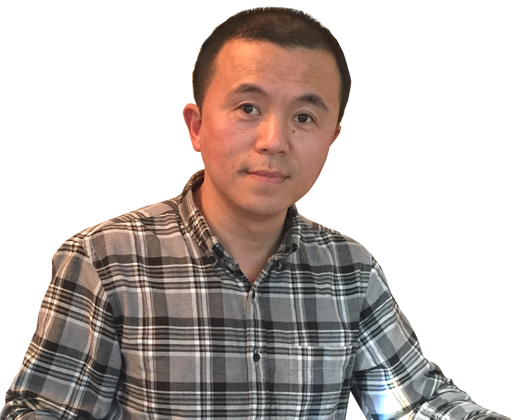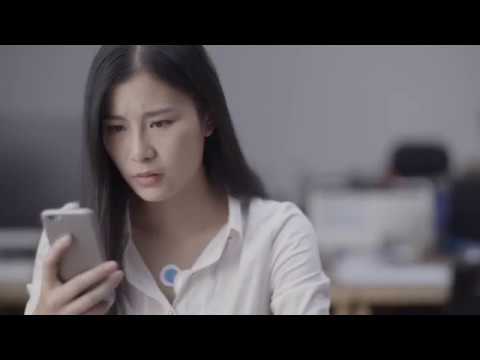MinttiHealth
The Sum is More than Its Parts
MinttiHealth takes advantage of its expertise in sensors and signal processing to provide more robust and accurate assessments of cardiac disease from multiple data sources.
By Stephanie Kreml,
MD
Sun LeQun co-founded Mintti Health in 2016 to enable modern technology for a healthier world. Sun was previously a provincial agent for Siemens and Philips Healthcare in China, and he also helped build hospitals in disadvantaged areas of Africa.
It was during a trip to Lilongwe, Malawi that he realized providing medical equipment without necessary support to these underserved areas was not the best solution for delivering healthcare.
Sun noticed a brand-new Draeger ventilator sitting in the hospital corridor untouched and still in its packaging. When he asked why the equipment was not being used, he was told it was donated by President Clinton during a visit. Unfortunately no one in the hospital knew how to use this advanced piece of technology. So this expensive, sophisticated ventilator took up space instead of helping patients.
This experience left a big impression on Sun, and so he set out to create a medical device company that provides telemedicine devices and services to truly improve the delivery of healthcare.

Sun believes the combination of the data and the parameters the Heartbook and Isteso-D2 devices acquire is key to better remote monitoring of patients. “We think that the fusion of heterogeneous data on cardiac indications will be a new trend in the future of diagnosis and analysis of cardiac diseases.”
“If the ECG and heart sound signals are combined, the characteristics of the ECG signals that are not easily disturbed could be used to judge the heartbeat cycle, and then combined with the heart sound signal to determine what are the noises,” Sun explains. In essence, MinttiHealth’s software uses the heart and lung sounds captured by the Isteso-D2 digital stethoscope to filter out noise and movement, thus improving the signal-to-noise ratio for the ECG tracings.
Sun goes on to say that the data from these devices complement each other, so together they “capture the characteristics of the heart signal more comprehensively and make a more accurate diagnosis.” He likens it to a painting: “the ECG signal is like the composition of the entire painting, giving the viewer a sense of rhythm and structure, while the heart sound signal is like the saturation of the color and the granularity of the strokes, presenting the details to the viewer.”
This combined analysis allows MinttiHealth’s devices to recognize murmurs and structural heart disease in patients. “We are one of the very few teams in the market that have mastered mature ECG technology and cardiopulmonary sound technology,” says Sun.
MinttiHealth presented results of a study to identify aortic stenosis (AS) in patients at the 2019 Innovation in Cardiovascular Interventions Meeting in Israel. “Our team developed the AI algorithms to realize the accuracy above 85%,” says Sun.
And the capabilities of the MinttiHealth devices go beyond cardiac care. Liaoning University of Traditional Chinese Medicine used the Isteso-D2 stethoscope in a clinical trial to obtain almost 20,000 samples of data with physician annotation to aid in the diagnosis of pediatric pneumonia.

Synergy from Different Sources
Assembling a Solid Team
Sun brought together a team of scientists and product designers with experience in sensors, acoustic and electro-physiological signal processing, and network platform construction to make his dream a reality. His team created the MinttiHealth Heartbook, a one-patch electrode ECG monitor. The Heartbook can act as a Holter monitor, and it also has other functions, including a heart rate alarm, respiratory rate monitoring, and abnormal posture sensing.
“Via Heartbook’s robust multi-parameter fusion algorithm, the optimized readings on record can be maintained on the device or the cloud,” explains Sun. This allows doctors to perform remote consultations and develop personalized disease management plans for their patients.
The Heartbook’s onboard processor has built-in templates for 216 patterns of arrhythmia and myocardial ischemia diseases in nine categories to aid physicians in diagnosis. The device’s compact cloverleaf design makes placement easy for monitoring patients. And MinttiHealth’s team developed and integrated its own power management chip to ensure longer battery life.
To complement the data acquired by the Heartbook, MinttiHealth developed the Isteso-D2 smart stethoscope. Shaped like the bell of a traditional stethoscope, the Isteso-D2 has Bluetooth connectivity to capture heart and lung sounds on a computer or smartphone. The back of the device has a display with volume controls and a headphone jack so the physician can listen to the patient during an exam.
“In addition to high-fidelity auscultation with friction noise dampening and ambient noise-reducing features, it has powerful analysis software which can conduct visualized analysis and processing of saved heart and lung sounds, classifying heart murmurs and enlarging details, and provide a matching treatment plan,” says Sun.
Continued Improvement
After obtaining 510(k) clearance for the Isteso-D2 digital stethoscope in December 2019, MinttiHealth will continue to develop its platform for its cardiac devices. The company is currently working on software to aid in cardiopulmonary disease diagnosis and a screening system for structural cardiac disease.
In addition to cardiac applications, MinttiHealth is also creating products for women’s health, including a fetal monitoring device, a fertility tracker, and a vitals monitoring system for pregnant women.
And Sun sees opportunities for even more medical applications using MinttiHealth’s technologies. “Cardiopulmonary coupling (CPC) technology can determine people’s sleeping state, by monitoring people’s light sleep, REM sleep, awake, and other states,” he says. Healthcare providers could use this approach to determine if there are sleep disorders or “identify the type of respiratory events, which could be adopted in the elderly home nursing, social health, and family scenarios.”
From an engineering perspective, MinttiHealth has developed a core set of signal processing algorithms. So no matter the source of the signal, from heart and respiratory sounds to ECG tracings, the same solid analytical principles apply. Sun says this “is also the key to our products’ strong competitiveness in domestic and international markets.”
No doubt, Sun’s years of experience in the medical industry will continue to guide MinttiHealth to develop more products and services for improved remote patient monitoring. “Mintti is committed to becoming a ‘real-time bridge and seamless connection’ between doctors and patients,” he says. Sun believes “telemedicine services will be a major medical trend in the future in both developed and developing countries.”

After many years in the traditional medical equipment industry, [Sun LeQun] realized that telemedicine services will be a major medical trend in the future in both developed and developing countries
Lequn Sun, Co-Founder

We think that the fusion of heterogeneous data on cardiac indications will be a new trend in the future diagnosis and analysis of cardiac disease.
Mintti is committed to becoming a ‘real-time bridge and seamless connection’ between doctors and patients.
